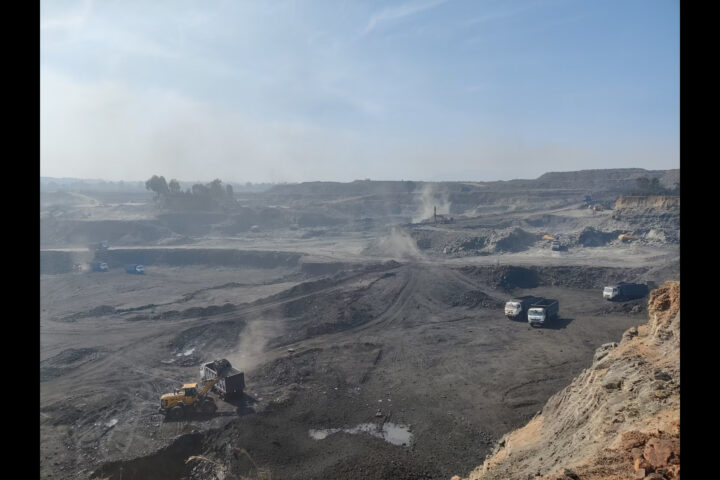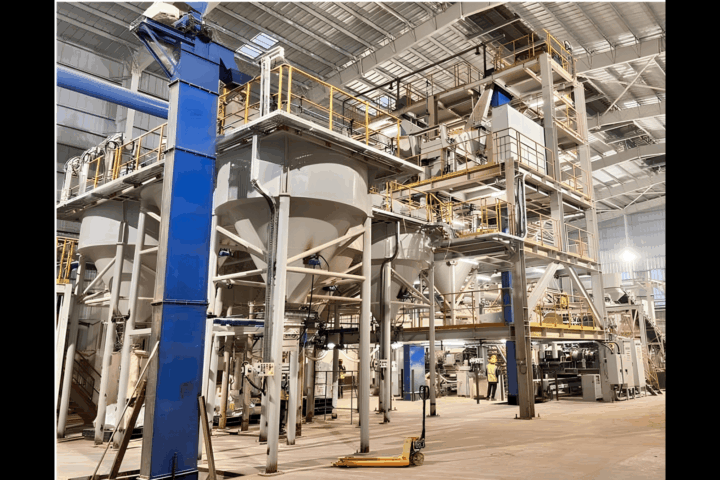In a country like India, where there is such a huge housing requirement, there cannot be a sustained slow down. The industry will definitely bounce back soon. Subodh Runwal, Director, Runwal Group
India has an impending need for building infrastructure what are your views on this?
Infrastructure is the backbone of any economy and is extremely essential for the growth of a nation, especially one like India. While infrastructure projects have received a boost in the past few years, a lot more needs to be done. We require larger investments in all major sectors such as construction, power, roads and aviation. Urban infrastructure and housing by itself needs massive efforts in view of the population growth at these centres. This will not be possible by government projects alone. We need to have many more public private partnership initiatives as well as a rise in the number of fully private ventures. The emergence of state of art airport terminals in metro cities is a good example of this kind of initiative. There is a huge gap in the requirement versus supply in the above mentioned sectors and there is tremendous potential and possibility of growth that needs to be addressed on priority.
The term slowdown has become synonymous with real estate, when do you expect it to recover?
Real estate is a cyclical market that goes through its ups and downs. So it is not something that has happened for the first time. Yes, this time it has lasted a bit longer. However, if you look closely, sales have not stopped across the industry, neither have new launches. Appropriately priced projects from developers with good track records are still doing well. The so called slow down is visible in pockets because of a number of reasons like unrealistic pricing, lack of planning, delays due to red tape in the approvals process and so on. In a country like India, where there is such a huge housing requirement, there cannot be a sustained slow down. The industry will definitely bounce back soon. However it is important to ensure that the projects are planned well and priced correctly. Faster approvals and streamlined policies are also vital for the industry’s growth.
The sudden price amplification has lead to the slowdown of estate development. Analysts have suggested that the price of the property vis-a-vis the purchasing power of an emerging India is one of the causes of the real estate slowdown; do you agree, what are your views?
The industry has corrected the price quite a bit, wherever possible, in the last year or so. With increasing costs of land, funding, construction and overheads, price reduction beyond a certain point will make the projects unviable. Financial impact due to delayed approval process also adds to the burden. Today the market is operating on minimum margins. A number of payment plans and financial schemes are on offer to make the purchase easier for the consumer. With increasing income levels and availability of finance options, home buying has also become easier over the years. As stated earlier, the slowdown is more visible in certain markets and segments and there are a number of reasons for that. Unrealistic pricing by some developers will also be one of them, but this cannot be generalised for the whole industry and attributed as the cause for the slow down.
Do you feel excessive promotions may add up to the dismay of real estate?
If one has a product, it will be advertised. It is part of the business and there is nothing wrong with it. The middle class client is much more inclined and capable of buying a house today and hence the developers will try to reach out to him. There is no risk or negative associated with this phenomenon. Yes, if the promises being made are false or misleading and the capability and intention of the developer is not up to the mark, then there is a problem. This is where bigger and reputed developers are a safer bet compared to unknown operators doling out big promises. The consumers need to do a check before deciding to proceed, which they any way do as real estate buying is not a small decision.
Do you think the future of real estate lies in rentals or ownership will tend to be the predominant trend?
There are a lot of factors that go into determining this. Capital values, income levels, rental trends and finance costs will in tandem decide whether ownership or rentals dominate a particular market. Today, with finance options available and the greater propensity to buy in the younger consumers, ownership trend will continue to grow. While in the long run, ownership will be the favoured option as it creates a high value investment as well. On the other hand, in high capital value markets rentals will continue to hold good. Individual choices like duration of stay at a place and the trends of annual rent escalation also affect the decision.
Many real estate groups have adopted the technique of offering their units on an invitation only basis, are you doing something along similar lines, do you think such marketing exercises are effective?
This is a method used typically for very high end properties where the objective is to maintain certain uniformity in terms of the customer net worth and create a feeling of being in the upper crust for buyers. It is a niche segment that caters to the status conscious buyers. They are very particular about the status of people living as their neighbours and the invitation only approach gives these buyers the desired assurance. This kind of marketing is always targeted at a small segment and for limited inventory volumes. This approach is largely defined by the product and the desired revenue velocity. While the margins are high, it is not a segment that offers rapid growth or volumes, though the number of such projects is gradually increasing. It depends purely on the developers if they want to have a niche offering with this marketing approach as a part of their overall portfolio.
Do you think the state government on its part should think beyond SRA, MHADA, and HUDCO and possibly invest in real estate to ensure affordable homes are made available to the burgeoning working class in the cities and the suburbs?
With the kind of urban growth we are witnessing, ensuring affordable homes for this rapidly expanding class is a huge challenge. It will require efforts from government as well as from the developers to tackle this issue. Yes, government investments will definitely help but the volumes will come in only if the developers are also a part of this effort. The recent budget announced positive measures to boost development of affordable housing which should get the developers interested in this segment. Most of the demand for housing is anyway in this category. More such policies and incentives will go a long way in increasing the supply of affordable housing stock. The challenge will be to get land in and around cities at rates that allow this kind of development while keeping it profitable. This requires a look at the entire urban development and planning as well.
Construction and real estate are two sectors which have readily made use of new technologies to offset cost and enhance quality? What are the new generation technologies that Runwal has adopted in its projects?
Technology is extremely important for us. Our efforts are to utilize the best technology available, not only in construction but also in other areas. We are currently using Korean construction technology to expedite the progress at our project Runwal Forests. This method uses Aluminium Shuttering System which cuts down slab cycle times significantly compared to the conventional method and also improves the quality of construction. Similarly, we are using latest technology to get the best possible output in our other projects as well. Our sales and back office processes are also run on automated software for best efficiency and effective customer service.
When it comes to housing, developers believe purchasing land parcels from the city and an increase in volume is the way forward to reduce the cost per unit making it affordable, what is your feedback on the same?
With the way land costs are skyrocketing, this seems to be the only logical way to keep the prices in a reasonable range. In cities like Mumbai, land is extremely scarce, making it extremely expensive. This gets factored in the apartment cost and there is a limit to how much a buyer is willing to pay. Slowly, in all urban centres the same problem is creeping up. So, higher volumes are required to maintain profitability. However, high volumes also mean added pressure on the civic infrastructure. This makes effective urban planning a critical element. Growth and development of urban infrastructure at a rapid pace is required to allow sales in high volumes. The role of the government is critical in this aspect.
What are the green solutions Runwal group has put to use in its projects?
Environmental aspects are of primary importance to us and we have taken significant efforts to ensure our projects are green. There are certain green measures which are mandatory as a part of the project approval. We, at Runwal Group, are committed to achieving a much higher level than this because green measures are a global need today and responsible developers like us should take the onus of implementing them. Runwal Greens is an IGBC Gold pre-certified project while Runwal Forests is IGBC Silver pre-certified project. Several measures like rainwater harvesting, water recycling, use of energy saving equipment, CFC free equipment, water efficient fixtures, waste management system and many more have been incorporated in our projects. Going forward also we shall ensure the maximum implementation of green solutions in all our projects.
How has the introduction of RERA (Real Estate Regulation Bill) helped the real estate industry and the consumers?
The exact benefits will only become clear with time. However, setting up of RERA will be good for the industry as it will now work under a regulated framework and will have a control mechanism. Hopefully, this will make the industry more transparent, professional and organised. There may be some cost escalation and dip in supply in the initial phases due to norms like restrictions on transfer of funds from the project, but it will also mean faster completion of projects. Companies which do not have strong financial discipline will either have to change for the better or will cease to exist in the long run. Though there are more benefits for the consumer than the developer, overall, it will help in bringing a new confidence in the market. It would have been better if aspects like number of approvals, permission timelines and availability of easy project finance were also addressed along with more stable regulatory guidelines and taxation norms.


















